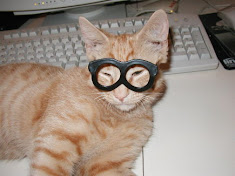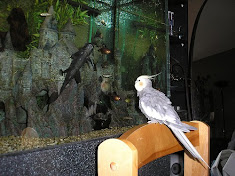 |
| Livin' Large by Stuart Chalmers |
Another method to counteract overfeeding is to offer meals periodically throughout the day to your cats.
Cats living in multiple-cat households may be sneaking more than their fair share at meal time. Stores have timing bowls that reveal meal portions at different times of the day, or over a few days for short travel periods. Treats may be a dangerous addition to a cat's diet if you overindulge. Treats add calories that aren't always counted, so they can make a cat fat all by themselves if too much is provide.
Low-calorie treats may be a better option for owners who are training their cats or who can't resist spoiling them. You should eliminate table scraps that can defeat the benefits of the complete and balanced nutrition a formula food offers.
Exercise can burn calories and also has other health benefits. Lighter food and less food are important, but you have to put exercise into the formula. Some cats, including senior cats, may not jump at the chance to increase their heart rate.
House cats can be difficult to exercise and cats have a different mentality than dogs. Cats say, 'You have to give me something really good to get me to play and to come out from lying around'.
Interactive toys, catnip toys and toys with erratic movement may persuade a kitty to abandon its sunny napping spot to burn some calories. Mentally challenging cat toys may keep cats at a healthier weight. Cats love those crinkly toys and laser pointers.
Mix meal time with play time by putting dry kibble into a toy.
Making kibble feeding a game can help lengthen the feeding process, provide a mental challenge and discourage gorging at the bowl.
Leash training can be successful if you start cats off at an early age. Short and frequent walks, 15 to 20 minutes at a time, are best for cats that have less stamina than dogs. By slowly acclimating the pet to the feel of the harness and leash for increasing periods of time, cats can enjoy the same sort of exercise that's common for dog owners to employ.
Indoor cats are more likely to be sedentary, but don't be fooled. Some outdoor cats may not be getting enough exercise. You still have to monitor them because it depends on the cat.
Keep in mind that cats are fickle creatures, so variety is a necessity.
Author Resource: Animal44 is the owner and administrator of http://thatdarncat.aimoo.com a discussion board that spans all aspects of cats. You may repost this article as long as all links and original content are included.



0 comments:
Post a Comment